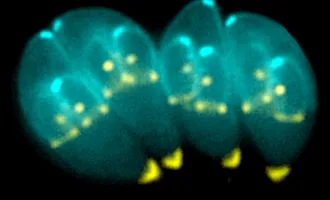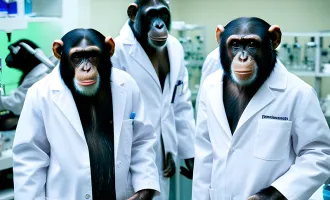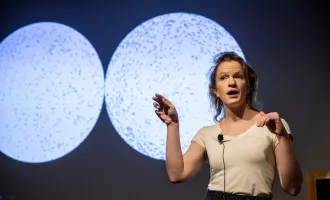History of Science: Discoveries and Re-Discoveries
Reviving Ancient Medicine
Bald’s Leechbook is one of the world’s oldest surviving medical texts. Dating to the 10th century and written in English and Latin in a Benedictine priory in Winchester, England, the text is preserved in the British Library and contains a collection of ancient “charms and potions” that served as remedies for various ailments and conditions. The British Library catalogue translates a Latin note that Bald was the book’s owner who enlisted Cild to write and compile it for him.
Associate Professor at the University of Nottingham in England, Christina Lee, whose research encompasses Viking and Anglo-Saxon Studies, has recently translated a thousand-year old recipe for an “eye salve” or eye infection remedy. The eye salve is a concoction of two species of Allium (the genus that includes onion, garlic, chives, scallion, shallot and leek), wine, and oxgall (cow stomach bile), which must be mixed in a brass container, strained and incubated for nine days prior to topical use.
Curious to test the ancient remedy, Dr. Lee collaborated with some of the University of Nottingham’s microbiologists to prepare the salve and test it on bacteria in culture, forming the interdisciplinary AncientBiotics team. Staphylococcus aureus was first cultured on collagen in vitro and treated with either the salve or each of its individual ingredients. While none of the individual components had antibacterial effects, the complete salve destroyed 99.99% of the bacterial culture. It even worked on S. aureus cultured as dense biofilms, which are typically more resistant to antibiotics.
When the salve was diluted to concentrations that did not kill the bacteria, the scientists observed that it interfered with the intercellular communication process called quorum sensing. Because this process allows a bacterial population to coordinate gene expression in response to growth density, aiding the formation of antibiotic-resistant biofilms, some groups are already searching for therapeutic agents to block quorum sensing during infection.
The salve was further tested on mouse wounds infected with antibiotic-resistant S. aureus by the group of Kendra Rumbaugh at Texas Tech University. The salve performed equally or better than any modern antibiotic in treating these infected wounds, though no treatment was 100% effective.
Modern science has certainly improved health orders of magnitude beyond what any ancient remedies could accomplish. Many of those remedies were also products of superstition and fiction, nonfunctional at best and harmful at worst. However, among the many potions concocted without proper controls or statistical power that have been buried by history, we occasionally find those that were clearly designed with a careful and observant trial and error that preceded formal scientific method. Many currently prescribed medications arose from natural products, and pharmaceutical companies continue to search through natural plant and animal products in search of new therapies. It is exciting when history lends a hand to modern discovery, and if further studies of Bald’s eye salve help develop a new treatment for antibiotic-resistant “superbugs,” a lost 10th century scientist can claim some posthumous glory.
These findings were presented at the 2015 Annual Conference of the Society for General Microbiology in Birmingham, England.
Sources: University of Nottingham, British Library
Reviving the Woolly Mammoth
George Church’s group at Harvard is using CRISPR gene editing to splice woolly mammoth genes into elephant skin cells. Although the work has not been peer reviewed or published, it received a frenzy of media attention in late March due to its futuristic and controversial nature. While some worry about the parallels to Jurassic Park, Church has argued that science should be “both practical and awe-inspiring,” and that one example of genetic “de-extinction” would change the landscape of possibilities for endangered ecosystems.
The group is using DNA from woolly mammoth samples extracted from Arctic permafrost and is splicing genes associated with cold weather resistance such as those regulating hair length and color, fat stores and small ear size. The result at the moment is that somewhere in Boston, Massachusetts is a plate of healthily growing elephant-mammoth hybrid skin cells cranking out mammoth proteins for the first time in 4000 years. Awe-inspiring, indeed.
Future plans for the research include in vitro differentiation into other specialized cells and organoids to test their function, followed by growing hybrid embryos in artificial wombs. If successful, this study should produce a cold-resistant hybrid elephant and lead the way to further genetic manipulation to potentially revive a pure mammoth.
Speaking of Jurassic Park, there was another flurry of news about paleontologists reviving the Brontosaurus. That revival was figurative, reclassifying Brontosaurus and Apatosaurus into separate genera after they were ruled identical in 1903 by Elmer Riggs. A recent publication in PeerJ by Emanuel Tschopp et al from the New University of Lisbon in Portugal catalogued hundreds of physical features and concluded that the two were, indeed, distinct. Now if only astronomers would revive poor demoted Pluto…
Sources: Popular Science, Discovery Magazine, Re/code, Scientific American, Wired


